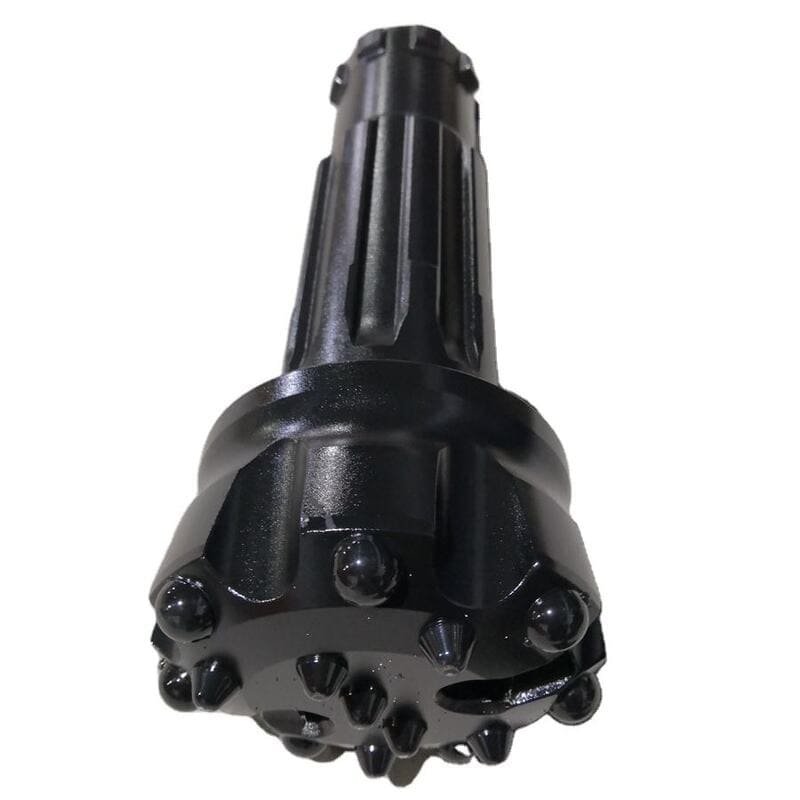
Ever wondered why some drill bits last longer and work better?
Heat treatment boosts the durability and lifespan of DTH drill bits by enhancing hardness, toughness, and fatigue resistance. This process not only optimizes their performance in tough conditions but also cuts down on maintenance costs by improving wear resistance and structural integrity.
I remember the first time I truly appreciated the magic of heat treatment on drilling equipment. Watching those drill bits slice through tough rock with ease, knowing they’d endure the harsh conditions, was like witnessing a small miracle. Heat treatment transforms ordinary metal into a powerhouse of durability, letting me focus on the task at hand without worrying about wear and tear. By boosting hardness and toughness, it’s like giving these tools a superhero suit, making them resilient against the demanding environments they face every day. And trust me, when you’re deep in a project, knowing your equipment can handle the pressure is everything.
Heat treatment increases DTH drill bits' hardness.True
Heat treatment enhances the hardness of materials, including drill bits.
Heat treatment decreases the lifespan of DTH drill bits.False
It actually extends lifespan by improving durability and resistance.
How Does Heat Treatment Enhance Hardness in DTH Drill Bits?
Unravel the mystery behind why heat-treated DTH drill bits are the unsung heroes of tough drilling jobs.
Heat treatment boosts the hardness of DTH drill bits by altering their internal structure through quenching and tempering, enhancing wear resistance, toughness, and durability. This transformation is crucial for drilling in challenging rock environments.
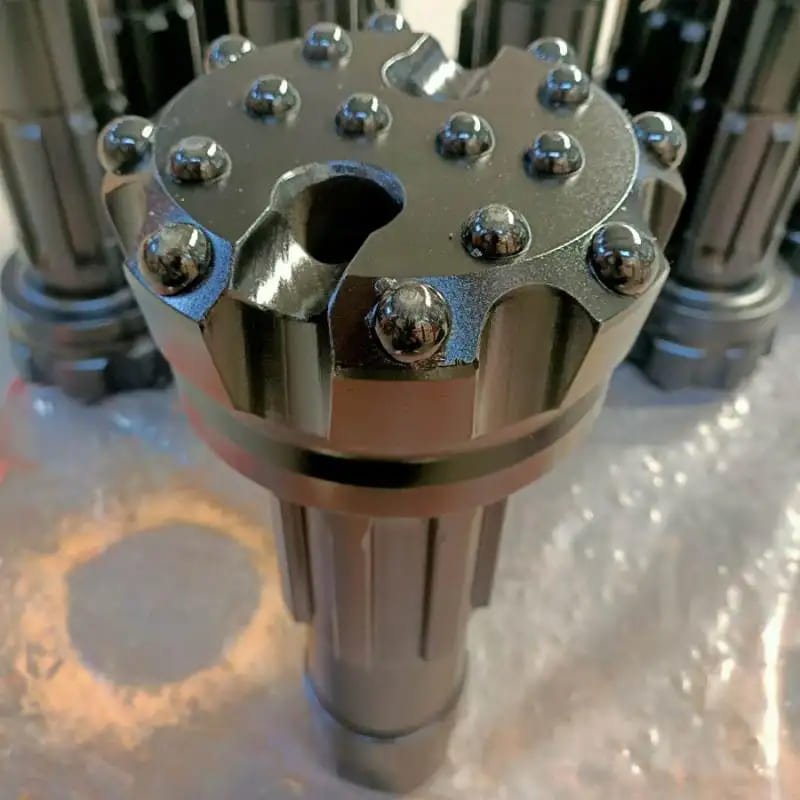
Understanding Heat Treatment Processes
The first time I saw heat treatment in action, I was mesmerized. Watching steel go from glowing hot to a sudden sizzle in oil or water is like witnessing magic. This process, known as hardening, involves heating steel to a high temperature and then quickly cooling it. It's a bit like diving into a cold pool on a hot summer day—shocking but invigorating!
But hardening alone can leave steel brittle, so tempering steps in as the gentle, soothing follow-up. It reheats the steel to a lower temperature and then cools it slowly, like sipping hot cocoa after that chilly dive. This process balances the toughness with enough softness to prevent brittleness.
Effects on Wear Resistance
When you're drilling through hard rock, wear resistance is your best friend. I remember one project where our drill bits seemed to wear out faster than we could replace them. It was a nightmare until we switched to heat-treated bits.
| Process | Impact on Steel |
|---|---|
| Hardening | Increases surface hardness and resistance to wear |
| Tempering | Balances hardness with ductility, reducing brittleness |
With processes like hardening increasing surface hardness and tempering balancing ductility, our bits lasted longer and kept their shape even when faced with abrasive rocks.
Enhancing Toughness and Fatigue Resistance
Drill bits endure high-impact forces daily, much like a boxer taking punch after punch. Without proper toughness, they'd shatter under pressure. Tempering helps here by reducing brittleness and increasing resilience.
- Impact Resistance: Tempering enhances resilience against impacts.
- Fatigue Resistance: Heat-treated steel withstands repeated loading, reducing crack formation.
This results in fewer breakages and longer service life, allowing our operations to run smoothly without constant interruptions.
Additional Benefits
Apart from hardness and toughness, heat treatment brings other perks:
- Corrosion Resistance: Some treatments also help guard against environmental factors like water ingress. It's like giving your tools a raincoat!
- Dimensional Stability: Stress relief during treatment ensures drill bits remain stable under stress, crucial for precise drilling.
These enhancements not only boost efficiency but also cut down maintenance costs, making heat-treated DTH drill bits1 indispensable for any tough drilling project.
Heat treatment increases DTH drill bit hardness.True
Heat treatment processes like hardening and tempering enhance the hardness of metals.
Tempering makes DTH drill bits more brittle.False
Tempering actually reduces brittleness, balancing hardness with ductility.
How Does Tempering Enhance Metal Toughness?
When I first learned about tempering in metallurgy, I was fascinated by how this process transforms the toughness of steel. It’s like giving metal a second chance at life!
Tempering increases metal toughness by reducing brittleness acquired during hardening. This process involves reheating quenched steel to a lower temperature and cooling it slowly, refining the microstructure and improving ductility without significantly compromising hardness.
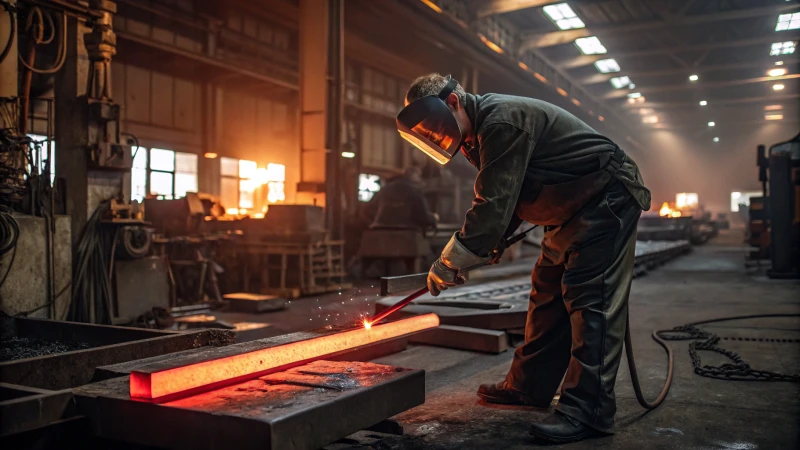
Understanding Tempering in Metallurgy
Imagine taking a piece of steel that’s been through the wringer—hardened and super strong, yet so brittle it could shatter like glass under pressure. That’s where tempering comes in, a technique I’ve come to appreciate for its ability to transform this fragility into resilience. During tempering, the metal is reheated to a temperature below its critical point, then cooled slowly. This gentle reheat allows internal stresses to relax and carbon atoms to rearrange, forming structures like ferrite or cementite. It’s like watching a chaotic crowd organize into a disciplined formation, resulting in metal that can absorb energy without breaking.
How Tempering Affects Metal Properties
Tempering not only fortifies toughness but fine-tunes other mechanical properties:
| Property | Effect of Tempering |
|---|---|
| Hardness | Slightly reduced to allow better ductility |
| Ductility | Increased, enabling deformation without cracking |
| Toughness | Significantly enhanced to withstand impact |
| Residual Stress | Reduced, minimizing chances of distortion |
I’ve seen firsthand how these changes are influenced by the specific temperature and duration of the tempering process. Lower temperatures keep more hardness, while higher ones boost ductility and toughness.
Applications and Benefits of Tempered Metals
The beauty of tempered metals is their versatility in demanding environments. Take DTH drill bits2 used in mining and construction—these bits endure harsh conditions thanks to tempered steel, which prevents them from breaking under stress. In my work, I’ve noted how crucial this is for ensuring that machinery doesn’t just hold up but excels in critical moments.
In the automotive and aerospace industries, tempered steel is indispensable. Components must resist impact and fatigue while maintaining structural integrity. By selecting the appropriate tempering parameters, engineers craft metals with the perfect balance of hardness and toughness for each unique application. It’s an art form really, one that requires knowledge and precision to get just right.
Tempering reduces metal hardness.True
Tempering decreases hardness to improve ductility and toughness.
Tempering increases metal brittleness.False
Tempering reduces brittleness by relieving internal stresses.
How Can Heat Treatment Enhance Fatigue Resistance?
Discover how a simple change can make all the difference in metal durability! Heat treatment is the unsung hero that boosts fatigue resistance, keeping materials strong under pressure.
Heat treatment enhances fatigue resistance by transforming the material's microstructure to improve hardness, toughness, and stress distribution. This involves processes like quenching and tempering, which prepare materials to better endure cyclic stresses.

Understanding Fatigue Resistance
I remember the first time I learned about fatigue resistance—it was during a workshop where an engineer explained how components in my own industry face constant wear from repeated use. Fatigue resistance is crucial for parts like DTH drill bits3 that endure relentless operational demands. Through heat treatment, we can enhance this property.
The Role of Microstructure
Microstructural Changes: Think of a material's microstructure like the foundation of a house; it needs to be robust and well-structured. Heat treatment processes such as annealing, quenching, and tempering refine this foundation, enhancing fatigue resistance by optimizing grain size and minimizing flaws.
| Process | Key Effect |
|---|---|
| Annealing | Refines grain structure |
| Quenching | Increases hardness |
| Tempering | Reduces brittleness |
Quenching and Tempering
Quenching: Picture yourself rapidly cooling down after a long run—that's quenching for metals. It involves heating the material followed by quick cooling, forming a hard but sometimes brittle structure.
Tempering: This is like stretching after that run—tempering reheats the metal gently to relieve stress while maintaining a balance between hardness and toughness. This dual-step method is key to improving fatigue life4 by preventing cracks.
Stress Relief Techniques
Stress relief plays a pivotal role, much like unwinding after a stressful day. It eliminates residual stresses from manufacturing that could lead to warping under operational conditions.
Example:
Consider drill bits5. Stress-relieving ensures these bits maintain their shape and integrity, delivering consistent performance even in challenging environments.
Practical Applications
Industries from aerospace to construction leverage heat treatment to enhance the fatigue resistance of critical components. By tailoring materials through specific heat treatments, they achieve peak performance.
- Aerospace: Jet engine parts undergo precise heat treatment to withstand high-speed cyclic loading.
- Automotive: Suspension systems benefit from improved fatigue resistance via controlled quenching and tempering.
Applying the right heat treatment processes6 optimizes component performance, reducing maintenance and boosting efficiency—a win-win in any field.
Quenching increases hardness in metals.True
Quenching rapidly cools heated metals, forming a hard martensitic structure.
Annealing reduces material brittleness.False
Annealing refines grain structure but does not directly reduce brittleness.
How Can Heat Treatment Processes Enhance Corrosion Resistance?
Ever wondered how a bit of heat can make metals tougher against corrosion? It’s fascinating what a little science can do!
Yes, heat treatment processes can boost corrosion resistance in metals by changing their microstructure. Techniques such as annealing and tempering work to enhance resistance by easing internal stresses and refining surface properties.

Understanding Heat Treatment Processes
I remember the first time I saw a heat treatment process in action. It was like witnessing magic as metals transformed, becoming stronger and more resilient. Heat treatment, in essence, is about carefully heating and cooling metals to tweak their physical and mechanical attributes while keeping their shape intact. This process is pivotal in boosting hardness, ductility, and toughness—qualities that also play into improving corrosion resistance. For instance, annealing processes7 help relieve stresses that can otherwise make metals more prone to corrosion.
Mechanisms of Corrosion Resistance Enhancement
Through heat treatments, we can alter surface structures and compositions, which often results in a more uniform oxide layer—this acts as a shield against corrosive forces. I’ve seen how processes like tempering reduce brittleness, thereby indirectly enhancing corrosion resistance by preventing cracks under stress.
Practical Applications in Industries
Stainless Steel Treatment
In the realm of stainless steels, heat treatments play a crucial role. They help distribute chromium evenly, which is essential for forming a protective oxide layer. Techniques like annealing and quenching are frequently employed to achieve the best results.
| Process | Effect on Stainless Steel |
|---|---|
| Annealing | Improves ductility and stress relief |
| Quenching | Enhances hardness, maintains structure |
Aerospace and Automotive Sectors
These industries heavily rely on heat treatments to ensure their components can brave harsh environments. I’ve heard stories from colleagues who’ve used temper-hardening8 to enhance fatigue resistance, which naturally aids in improving corrosion performance.
Challenges and Considerations
While the benefits of heat treatment are significant, it’s not without its pitfalls. If done incorrectly, it can lead to grain boundary sensitization—a real headache. Understanding the specific requirements of each metal and application is crucial. The techniques must be optimized to ensure that desired properties are achieved without compromising structural integrity.
Ongoing research continues to explore innovative heat treatment methods that promise even better corrosion resistance, such as experimenting with various temperature profiles or introducing protective atmospheres during the treatment process.
Annealing improves ductility in stainless steel.True
Annealing relieves stress and enhances ductility, preventing corrosion.
Quenching increases brittleness in metals.False
Quenching increases hardness but can reduce brittleness when done correctly.
Why is stress relief important in DTH drill bit manufacturing?
I remember the day I first discovered how vital stress relief was in DTH drill bit manufacturing. It changed everything for me.
Stress relief in DTH drill bit manufacturing is crucial because it minimizes residual stresses, preventing warping and ensuring dimensional stability. This process enhances the structural integrity of the bits, leading to precise performance in challenging drilling conditions.
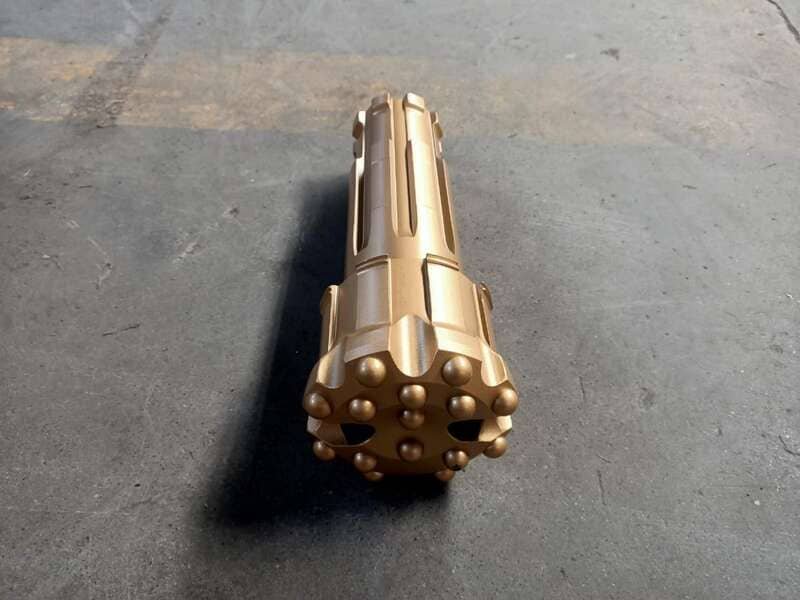
The Role of Stress Relief
When I first dove into the world of DTH drill bit manufacturing9, I quickly learned about the hidden enemy: internal stresses. These sneaky stresses, introduced during machining and welding, could sabotage the effectiveness of our drill bits by causing them to deform over time. Managing these stresses isn't just technical jargon; it's essential for producing reliable equipment that stands up to the tough demands of real-world drilling.
Methods of Stress Relief
-
Thermal Stress Relief: Involves heating the material to a specific temperature and then cooling it slowly. This method effectively relieves internal stresses without affecting the material's mechanical properties.
-
Vibratory Stress Relief: Utilizes low-frequency vibrations to relax stresses. This method is often employed when thermal methods might alter the material properties.
| Method | Process | Benefits |
|---|---|---|
| Thermal | Heat and slow cool | Effective for large structures |
| Vibratory | Low-frequency vibrations | Non-invasive, preserves properties |
Benefits of Stress Relief
-
Dimensional Stability: I once faced a project where the precision of DTH drill bits was non-negotiable. Thanks to stress relief, our bits retained their dimensions under heavy loads, ensuring accuracy and consistency.
-
Increased Durability: In high-impact environments like mining, where equipment takes a beating, stress-relieved drill bits showed remarkable resistance to fatigue and fractures. This reliability was crucial in avoiding unexpected downtime.
-
Enhanced Performance: Consistent structural integrity means these bits performed better over time, reducing the need for replacements and cutting down on maintenance costs—a win-win for both operations and budgets.
Explore more about DTH drilling equipment10 to see how they operate and deliver real-world benefits.
Practical Implications in Manufacturing
For us manufacturers, prioritizing stress relief is not just about ticking boxes; it's about ensuring our products stand the test of time. Depending on the material and final properties desired, we choose between thermal and vibratory methods. Implementing stress relief can significantly boost product longevity and efficiency, tackling many common challenges11 faced in industrial drilling. By focusing on quality control, we not only enhance our project outcomes but also achieve higher customer satisfaction—a crucial aspect in maintaining long-term relationships.
Thermal stress relief alters material properties.False
Thermal stress relief preserves material properties by controlled cooling.
Vibratory stress relief uses low-frequency vibrations.True
It employs vibrations to relax stresses without altering properties.
How Do Customized Heat Treatments Benefit Specific Drilling Conditions?
Imagine drilling into the Earth's toughest terrains, knowing your tools are perfectly tailored for the job.
Customized heat treatments enhance drill bit performance by tailoring material properties to specific conditions, improving hardness, toughness, and corrosion resistance. This results in better durability, operational efficiency, and reduced maintenance.
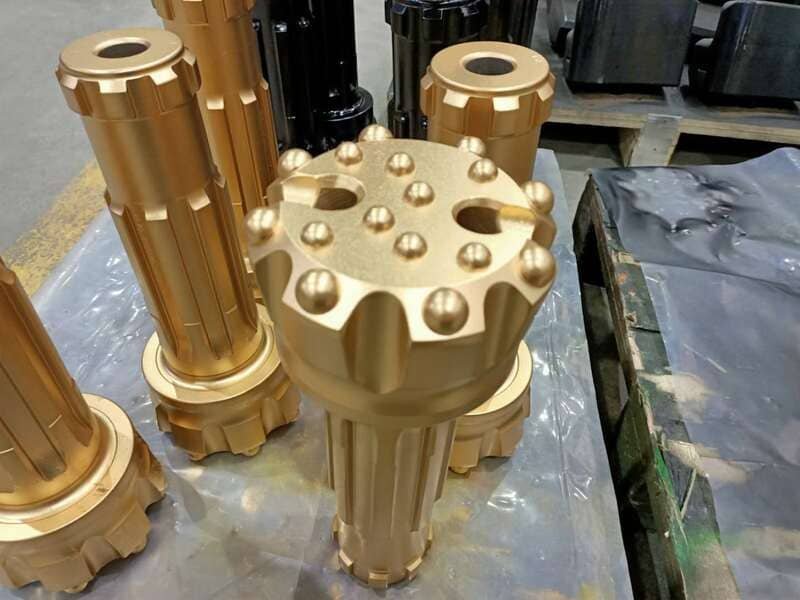
Tailoring Material Properties
I remember the first time I really appreciated the science behind drilling tools. It was during a project where the ground was so abrasive that our standard tools wore out faster than you could say "downtime." That's when I learned about the magic of carburizing processes12. By increasing the surface carbon content, these treatments significantly boosted wear resistance, making our tools last in even the toughest conditions.
| Heat Treatment | Purpose | Application Example |
|---|---|---|
| Carburizing | Increases surface hardness | Drilling in abrasive rock |
Enhancing Hardness and Toughness
Over the years, I've seen how different drilling conditions demand different levels of hardness and toughness. A classic example is quenching and tempering13. I once visited a site where we needed to balance these properties just right. Quenching hardened our steel rapidly, but it was tempering that adjusted the brittleness, giving us the toughness we needed.
Improving Corrosion Resistance
In wet or chemically aggressive environments, drill bits face a unique challenge. I recall a coastal project where enhanced corrosion resistance14 was a game-changer. Even though this isn't the primary goal of heat treatments, it extended our tool lifespan significantly.
Stress Relief and Dimensional Stability
Let's not forget stress relief. After manufacturing, internal stresses can be sneaky saboteurs. Once, we had a batch of bits that lost shape mid-operation—an issue remedied by a stress-relieving process15. This ensured our tools maintained their structural integrity for consistent performance.
Customization for Unique Conditions
Customization is where things get personal. I’ve seen firsthand how tailored processes meet specific geological challenges head-on. Whether it's surface hardening for a tough core with a hard exterior or adapting to a unique rock formation, these bespoke solutions not only boost performance but cut costs by extending tool life and reducing replacements. That's efficiency at its finest!
Carburizing increases drill bit wear resistance.True
Carburizing adds carbon to the surface, enhancing hardness and wear resistance.
Tempering reduces drill bit toughness for deep drilling.False
Tempering actually enhances toughness, making it suitable for deep drilling.
Conclusion
Heat treatment significantly enhances DTH drill bits' performance by improving hardness, toughness, fatigue resistance, and corrosion resistance, leading to increased durability and reduced maintenance costs in challenging drilling environments.
-
Learn about how heat-treated DTH drill bits excel in durability and performance. ↩
-
Details on DTH drill bits highlight their reliance on tempered steel for durability. ↩
-
Learn how DTH drill bits leverage heat treatment for improved performance in drilling applications. ↩
-
Explore how specific heat treatment techniques contribute to extending the fatigue life of materials. ↩
-
Discover stress relief methods used in drill bits to maintain dimensional accuracy under stress. ↩
-
Understand various heat treatment processes that improve metal properties for industrial use. ↩
-
Learn how annealing reduces stress and improves corrosion resistance in metals. ↩
-
Understand how temper hardening strengthens materials for better corrosion resistance. ↩
-
Discover the significance of stress relief in maintaining drill bit integrity and performance. ↩
-
Understand the applications and benefits of DTH drilling equipment in various industries. ↩
-
Learn about typical issues faced in drilling operations and how stress relief can help. ↩
-
Carburizing increases surface hardness, vital for tools facing abrasion, thus extending tool life and efficiency. ↩
-
Quenching and tempering tailor steel properties, ensuring balance between hardness and toughness, crucial for diverse drilling tasks. ↩
-
Learn how heat treatment enhances corrosion resistance, crucial for drill bits in wet or chemically active environments. ↩
-
Stress relieving maintains dimensional accuracy and prevents deformation, essential for precision drilling operations. ↩







